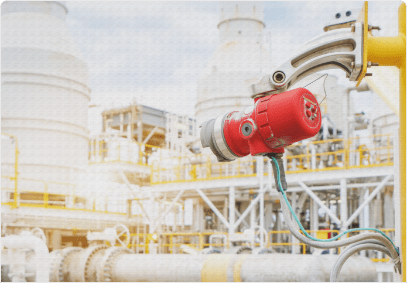Some Known Incorrect Statements About Roar Solutions
Some Known Incorrect Statements About Roar Solutions
Blog Article
See This Report on Roar Solutions
Table of ContentsUnknown Facts About Roar SolutionsSome Ideas on Roar Solutions You Need To KnowExcitement About Roar Solutions
In order to safeguard installations from a possible surge a technique of evaluating and categorizing a possibly dangerous location is required. The objective of this is to guarantee the proper selection and installment of tools to eventually protect against an explosion and to make certain safety of life.
(https://www.startus.cc/company/roar-solutions)
No tools must be installed where the surface temperature of the equipment is higher than the ignition temperature of the offered threat. Below are some usual dirt unsafe and their minimal ignition temperature. Coal Dust 380C 225C Polythene 420C (melts) Methyl Cellulose 420C 320C Starch 460C 435C Flour 490C 340C Sugar 490C 460C Grain Dust 510C 300C Phenolic Material 530C > 450C Aluminium 590C > 450C PVC 700C > 450C Soot 810C 570C The chance of the risk being present in a focus high sufficient to cause an ignition will certainly vary from location to area.
In order to identify this risk an installment is split into locations of threat relying on the amount of time the hazardous is existing. These locations are referred to as Areas. For gases and vapours and dusts and fibers there are 3 areas. Area 0 Zone 20 A harmful ambience is extremely likely to be present and may exist for extended periods of time (> 1000 hours annually) or even continually Area 1 Zone 21 An unsafe environment is possible yet unlikely to be existing for extended periods of time (> 10 450 C [842 F] A classification of T6 means the minimum ignition temperature is > 85 C [185 F] Dangerous location electrical equipment possibly developed for usage in higher ambient temperatures. This would suggested on the ranking plate e.g. EExe II C T3 Ta + 60C( This means at 60C ambient T3 will certainly not be surpassed) T1 T1, T2, T3, T4, T5, T6 T2 T2, T3, T4, T5, T6 T3 T3, T4, T5, T6 T4 T4, T5, T6 T5 T5, T6 T6 T6 A T Class ranking of T1 suggests the maximum surface temperature level produced by the instrument at 40 C is 450 C. Thinking the associated T Course and Temperature ranking for the equipment are appropriate for the location, you can constantly utilize an instrument with an extra rigorous Division score than needed for the area. There isn't a clear response to this inquiry. It really does depend upon the kind of equipment and what repairs need to be executed. Equipment with particular examination treatments that can't be done in the area in order to achieve/maintain third event score. Should return to the factory if it is prior to the devices's solution. Area Repair Work By Authorised Worker: Complicated screening may not be called for however certain procedures might require to be adhered to in order for the equipment to keep its third celebration ranking. Authorised workers need to be utilized to perform the job appropriately Fixing should be a like for like replacement. New element need to be taken into consideration as a straight substitute needing no unique screening of the tools after the fixing is full. Each tool with a hazardous ranking need to be evaluated independently. These are described at a high level listed below, yet for more thorough information, please refer directly to the guidelines.
Roar Solutions Fundamentals Explained
The devices register is a comprehensive data source of tools documents that includes a minimum collection of fields to identify each product's area, technological parameters, Ex lover classification, age, and ecological information. This information is vital for tracking and handling the devices efficiently within dangerous areas. On the other hand, for routine or RBI sampling assessments, the grade will certainly be a mix of In-depth and Close evaluations. The proportion of Comprehensive to Close assessments will certainly be established by the Tools Risk, which is evaluated based upon ignition threat (the likelihood of a source of ignition versus the possibility of a flammable ambience )and the hazardous location classification
( Zone 0, 1, or 2). This variant will certainly additionally influence the resourcing needs for work preparation. When Lots are defined, you can develop tasting strategies based on the example dimension of each Great deal, which describes the variety of arbitrary tools things to be inspected. To figure out the needed example dimension, 2 facets require to be reviewed: the dimension of the Lot and the category of examination, which indicates the degree of initiative that ought to be used( reduced, normal, or raised )to the evaluation of the Whole lot. By combining the classification of inspection with the Whole lot size, you can then develop the ideal being rejected requirements for an example, implying the allowable number of damaged things located within that example. For even more details on this procedure, please describe the Power Institute Standards. The IEC 60079 standard recommends that the optimum interval between inspections should not exceed 3 years. EEHA evaluations will additionally be carried out beyond RBI campaigns as part of arranged maintenance and tools overhauls or fixings. These examinations can be credited toward the RBI example sizes within the impacted Great deals. EEHA examinations are performed to recognize faults in electrical devices. A heavy scoring system is essential, as a solitary piece of tools may have multiple faults, each with differing levels of ignition threat. If the consolidated rating of both evaluations is much less than twice the mistake score, the Whole lot is considered acceptable. If the Whole lot is still thought about inappropriate, it must undertake a full assessment or justification, which might trigger stricter assessment protocols. Accepted Great deal: The root causes of any kind of faults are determined. If an usual failure setting is located, additional devices might call for maintenance. Mistakes are classified by seriousness( Safety and security, Honesty, House cleaning ), making certain that urgent issues are examined and resolved promptly to reduce any influence on safety and security or operations. The EEHA database need to track and tape-record the lifecycle of mistakes along with the restorative activities taken. Carrying out a robust Risk-Based Evaluation( RBI )strategy is vital for guaranteeing conformity and safety in taking care of Electrical Equipment in Hazardous Locations( EEHA) (Roar Solutions). Automated Fault Rating and Lifecycle Monitoring: Easily manage faults and track their lifecycle to boost inspection accuracy. The introduction of this assistance for risk-based inspection further strengthens Inspectivity's position as a best-in-class solution for governing conformity, in addition to for any type of asset-centric evaluation use case. If you have an interest in finding out more, we welcome you to ask for a demo and uncover exactly how our option can transform your EEHA management processes.
A Biased View of Roar Solutions

In regards to explosive danger, an unsafe area is an environment in which an eruptive environment is present (or might be expected to be existing) in quantities that call for special precautions for the construction, installment and use equipment. electrical refresher course. In this short article we check out the challenges faced in the workplace, the risk control steps, and the required proficiencies to work securely
It issues of contemporary life that we make, save or take care of a variety of gases or fluids that are considered combustible, and a variety of dirts that are deemed flammable. These materials can, in certain conditions, form explosive environments and these can have significant and heartbreaking consequences. Many of us know with the fire triangular remove any kind of one of the 3 aspects and the fire can not take place, however what click here for more info does this mean in the context of unsafe areas? When damaging this down into its most basic terms it is essentially: a mix of a specific quantity of release or leak of a specific material or material, combining with ambient oxygen, and the visibility of a resource of ignition.
In the majority of circumstances, we can do little regarding the degrees of oxygen airborne, however we can have considerable influence on resources of ignition, for example electric equipment. Dangerous areas are documented on the dangerous area classification drawing and are identified on-site by the triangular "EX" sign. Here, among various other vital details, areas are split into three kinds relying on the threat, the chance and period that an eruptive environment will exist; Zone 0 or 20 is regarded one of the most unsafe and Area 2 or 22 is regarded the least.
Report this page